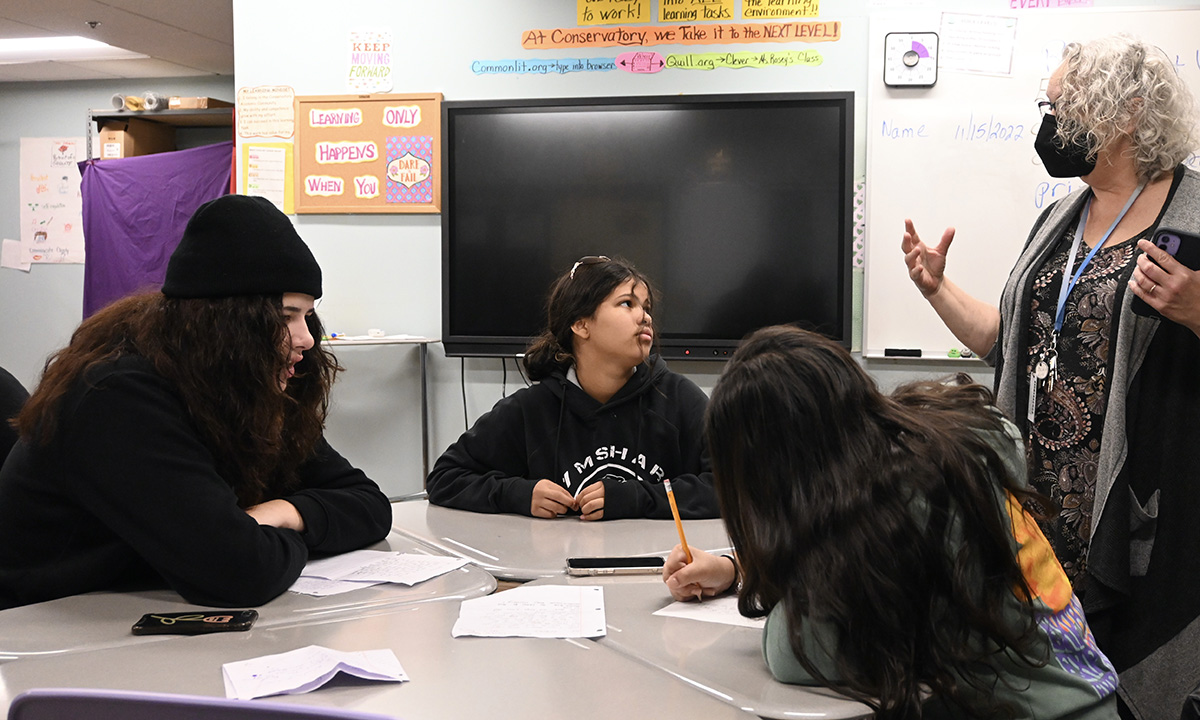How ‘Portrait of a Graduate’ Is Spurring Innovation in Springfield Schools
Foster: Based on community input, district created blueprint for a vision of what every student who graduates HS should know, and how to get there

Get stories like this delivered straight to your inbox. Sign up for The 74 Newsletter
Last spring, a group of elementary school students at Mary M. Walsh Elementary School in Springfield, Massachusetts, excitedly showed their families and other community members the results of the endangered species project they had been working on all year. They had not only learned about the animal they researched, but emerged with improved communication skills and a better understanding of local history, regional geology and how to advocate for a cause, respond to feedback and make revisions along the way to a final product.
This project-based learning experience is one of many new community-inspired initiatives that are part of a six-year strategic plan to reimagine Springfield schools. It’s the result of the “Portrait of a Graduate” project that the district worked on with 12 other communities across New England with funding from The Barr Foundation and technical support from The Learning Agenda. Springfield Public Schools is the second-largest district in New England, serving a population of nearly 24,000 students that is 18% Black and 68% Latino. English is a second language for nearly 30% of the students, 25% have a disability and nearly 90% come from low-income households.
The idea behind “Portrait of a Graduate” is simple: It’s a guiding vision for student success. Although a major goal of K-12 educators is to watch their students grow up and eventually wear caps and gowns at graduation, it is also important to make sure students have the skills necessary for success when they do, whether they choose to work or pursue higher education. Reading, writing and arithmetic are important but not sufficient. There’s just so much more that’s necessary to navigate the world and thrive.
When we examined data on outcomes for Springfield’s students after high school graduation, we saw that too few were matriculating to postsecondary education, persisting and earning degrees. Students needed to be able to overcome challenges. They needed to know where to go to for help. They needed to know how to advocate for themselves and others.
When formulating our “Portrait of a Graduate” plan, we didn’t talk only to educators. We had 200 community conversations and got input from a diverse group of 2,000 stakeholders including leaders of local businesses, colleges, nonprofits and faith-based organizations, first responders, families and students. They told us what they think students need to know and be able to do. A major theme was that people wanted what students learn in school to be relevant to them outside the school setting. Once we gathered input from the community, we created a “Portrait of a Graduate” that became a blueprint outlining our vision of what we want for every student who graduates high school, and how to get there.
Now, we are putting the plan into action. We are creating opportunities for students to gain knowledge and skills they will need after graduation, such as communication, collaboration, persistence and critical thinking. For example, a major theme across the board in our community conversations was that students need to know more about money. As a result, we have made financial literacy classes available to our high school students.
We’ve got a long way to go, but early results are promising. So far, we have rolled out our new approach aligning teaching and learning with the “Portrait of a Graduate” in 16 Springfield schools — nine last year and seven this fall — and reaction has been overwhelmingly positive. Educators like the ability to try something new, and administrators appreciate how this new vision is tailored to who their students are. Community members are grateful that their ideas and needs are being heard and turned into programming that is building the skills their future workers and community members will need to succeed. Students appreciate that their voice is being heard in the reimagining of school and that the district is prioritizing opportunities for them to express choice and their unique identity in their learning.
Anchoring meaningful school transformation in a community-driven “Portrait of a Graduate” that serves as north star can be a model to help close the education gap and prepare students for their future path, whatever direction it may take. It has reinforced our belief that there are multiple pathways for students to take, and that it is our job to support their development so they have the knowledge, skills and confidence to pursue those paths after graduation. Through this process we have also reaffirmed the value of community input — so much so that the superintendent created a new district position, chief of family and community engagement, with an office that includes family liaisons in each school.
The seeds of knowledge planted in an elementary school classroom in Springfield could blossom into innovative strategies and skills that benefit students and communities for many years to come.
Get stories like these delivered straight to your inbox. Sign up for The 74 Newsletter

;)
